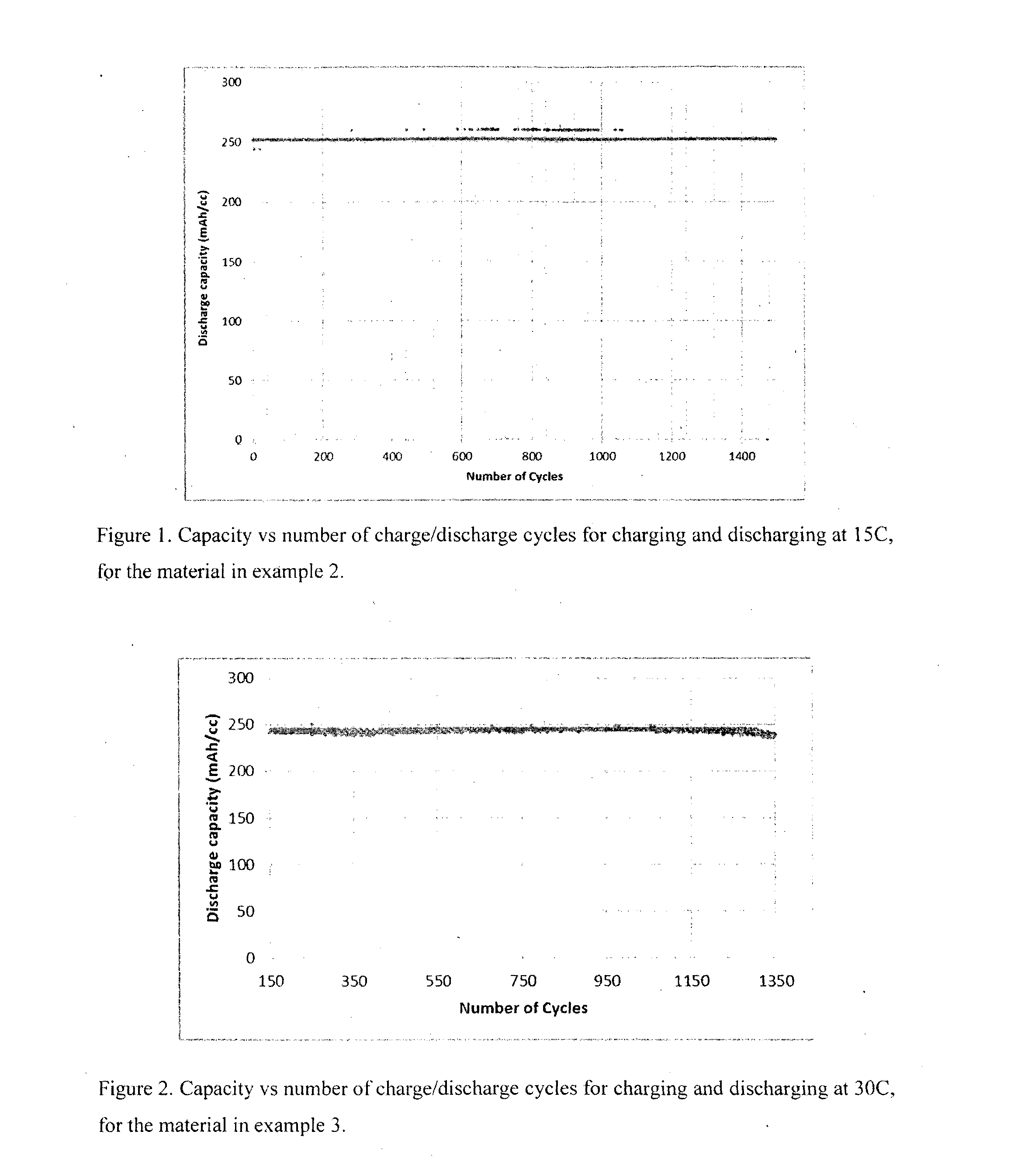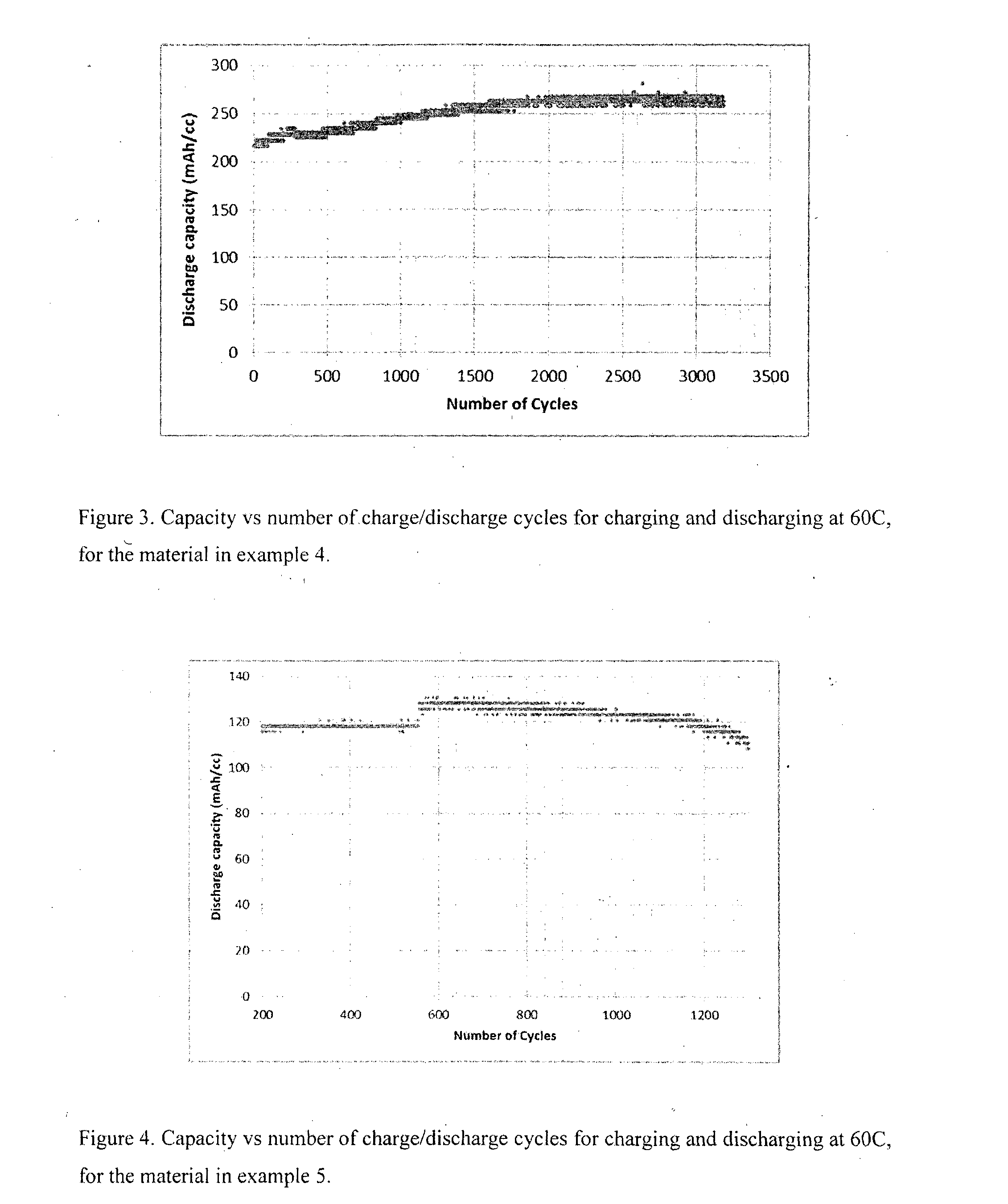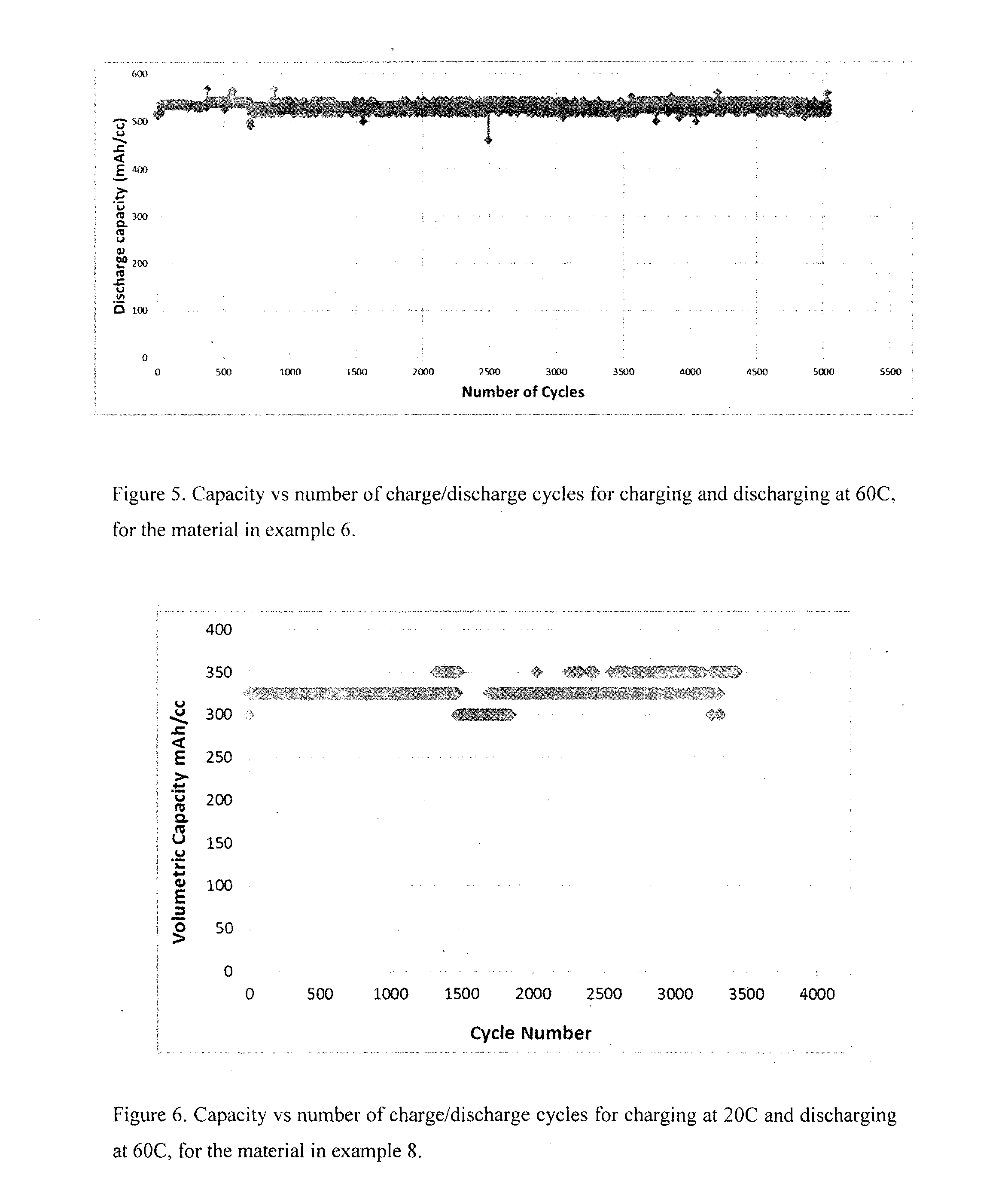Battery electrode materials
a battery electrode and material technology, applied in the field of battery electrode materials and batteries, can solve the problems of limiting capacity, high rate charging and/or discharging is generally very detrimental to stability, and is simply not possible at a given capacity and charge and/or discharge ra
- Summary
- Abstract
- Description
- Claims
- Application Information
AI Technical Summary
Benefits of technology
Problems solved by technology
Method used
Image
Examples
example 1
[0105]Nickel (Ni) was coated on a 0.45 μm cellulose acetate filter membrane using electroless deposition. The surface area of this substrate is estimated at ˜2.3 m2 / cc. The volume fraction of polymer is about 34%. The membrane was coated with a seed layer prior to electroless deposition. Weight measurements showed that the average thickness of the Ni coating was about 70 nm.
[0106]This sample was mounted in a flooded cell with a metal hydride counter electrode and an aqueous electrolyte with 6M potassium hydroxide and 1 wt % lithium hydroxide.
[0107]The material was activated using a conventional procedure by cycling at 0.2 C. After 3 cycles the capacity was ˜67.5 mAh / cc.
[0108]The material was further activated by cycling at higher rates. After 8 cycles at 5 C, the capacity was ˜234 mAh / cc. After further 6 cycles at 10 C, the capacity was ˜245 mAh / cc. After further 4 cycles at 20 C, the capacity was 249.7 mAh / cc. After a further 20 cycles at 10 C, the capacity was 270 mAh / cc. After a ...
example 2
[0111]Material was prepared in a similar manner to Example 1. The estimated thickness of nickel was 58 nm. The sample was initially activated by 11 cycles at 5 C, to give a discharge capacity of ˜189 mAh / cc. The sample was further activated by 11 cycles at 10 C to give a discharge capacity of ˜221 mAh / cc, then 10 cycles at 15 C to give a discharge capacity of ˜228 mAh / cc, then a further 30 cycles at 15 C to give a discharge capacity of ˜252 mAh / cc. The gravimetric discharge capacity was estimated as ˜143 mAh / g. The material was then cycled at 15 C at ˜100% DOD. FIG. 1 shows the capacity vs number of cycles at 15 C. Clearly the material is stable at 15 C. Discharging at 15 C gives power densities of ˜3.8 W / cc and ˜2.1 W / g, calculated using an average discharge voltage of 1V.
example 3
[0112]Material was prepared a similar manner to Example 1. The nickel thickness was estimated at 70 nm. The sample was initially activated at 5 C. After the 10th cycle the discharge capacity was 231 mAh / cc. The gravimetric discharge capacity was estimated as ˜118 mAh / g. FIG. 2 shows the capacity vs number of cycles at 30 C. Clearly the material is stable at 30 C. Discharging at 30 C gives power densities of ˜7 W / cc and ˜3.5 W / g, calculated using an average discharge voltage of 1V.
PUM
| Property | Measurement | Unit |
|---|---|---|
| volume fraction | aaaaa | aaaaa |
| thickness | aaaaa | aaaaa |
| volume fraction | aaaaa | aaaaa |
Abstract
Description
Claims
Application Information
 Login to View More
Login to View More - R&D
- Intellectual Property
- Life Sciences
- Materials
- Tech Scout
- Unparalleled Data Quality
- Higher Quality Content
- 60% Fewer Hallucinations
Browse by: Latest US Patents, China's latest patents, Technical Efficacy Thesaurus, Application Domain, Technology Topic, Popular Technical Reports.
© 2025 PatSnap. All rights reserved.Legal|Privacy policy|Modern Slavery Act Transparency Statement|Sitemap|About US| Contact US: help@patsnap.com



